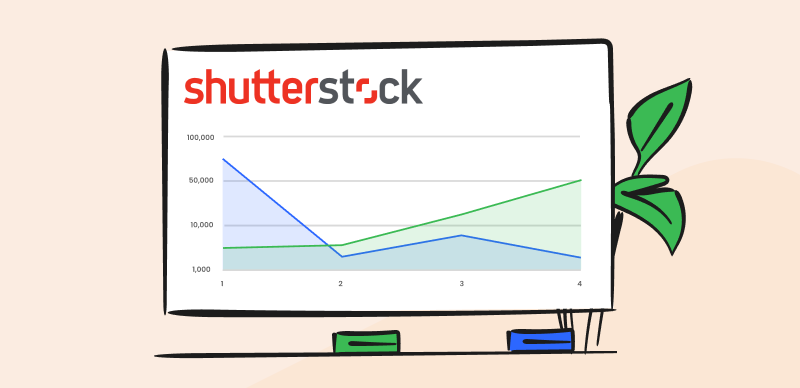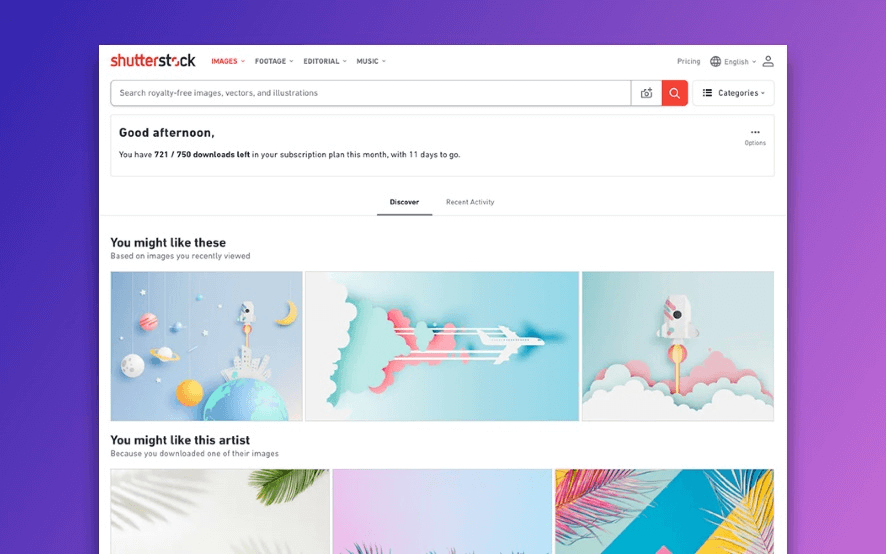
Using Shutterstock Images for Commercial Purposes
Digital repositories or photographs such as Shutterstock play a huge role in the modern multimedia ecosystem and empower businesses to use more expressive visuals at a reasonable cost. Such websites as iFunny are hosting millions of images created by highly skilled accredited authors and are available for downloading and reproduction under certain conditions.
Businesses can benefit in a big way from the instant availability of professional photos featuring all kinds of subjects, but they should be mindful that the images aren’t free. In particular, commercial use is regulated by strict financial rules and buyers need to adhere to them if they want to respect Shutterstock’s terms and conditions.
This guide will explain the nuances of Shutterstock’s licensing policy and point out some smart ways to use stock images to advance business objectives.
Also Read: How to Legally Use Pinterest Images on Your Website >
How to Understand Shutterstock Image Licenses & Prices
The best way to understand Shutterstock is to view it as a virtual marketplace where photos are exhibited for viewing but can’t be just taken away without permission. Each photo in the collection is offered for sale under a specific license that clearly defines how it can be used, as well as its value. Thus, commercial users planning to base large campaigns upon those images should carefully choose the type of license they purchase.

Shutterstock Image Licenses
There are four possibilities when it comes to Shutterstock licenses – Standard, Enhanced, Editorial, and Premier. Standard photos are very affordable and only cost between $0.22 and $14.50 per image, but they can be used in print publications with circulation under 500,000 and videos that cost less than $10,000 to produce. Images with Enhanced license have no such limitations, but they are priced higher, between $67.96 and $99.50 per unit.
Editorial photos are a special category as they are reserved for news usage, and their prices vary between $99 and $199 per image. Finally, Premier license is the most exclusive category and prices for such images must be requested directly from Shutterstock.
Also Read: Can I Use Images from Google on My Website >
5 Creative Ways to Use Shutterstock Photos for Your Business
The selection of stock photographs and illustrations available at Shutterstock is huge and diverse, so businesses in all industries can find smart applications for some of them. Here are some ideas:
Brand Awareness Campaigns
Powerful imagery captured in high resolution is ideal for representing your brand in printed or electronic media. Companies can choose a particular Shutterstock model as the face of the brand, or use a few key images as cornerstones of the visual identity, or choose a broad style as its primary expression.
When such images are readily available for download, even smaller businesses that lack the funds to organize their own photo shoots can launch a great-looking campaign to elevate brand recognition and gain visibility in the market.
Social Media Posts and Ads
Frequent posting is a must for companies looking to make headway through social media, and high-quality images are almost necessary for the posts to gain any attention online. That’s true even more for paid ads on social platforms, which have to compete with countless organic posts to be noticed.
Access to inexpensive photographs with a range of subject matters provides the marketing team with valuable resources that can drive engagement if utilized within the wider social media strategy.
Product Packaging
It may not be possible to use stock photos for depicting your products, but they can be extremely valuable when designing the packaging. Putting a smiling face or a dreamy landscape on your box is very simple when you can just buy images that have the exact look and feel you are after. Shutterstock has plenty of images from all around the world, so you can pick great ones for any foreign market you are planning to expand to as well.

Make Product Packaging
Internal Communication Templates
Who says internal communication must be bland and boring? Sprinkling lively images through templates for presentations, training materials, and the employee portal can breathe new life into the company and motivate the workers to perform better.
Since these materials are for internal use only, it makes more sense to illustrate them with affordable images from Shutterstock rather than to splurge on hiring a professional photographer for an on-site shoot. It’s also possible to change these images from time to time and keep things fresh.
Creating Mockups
In the process of pitching a project to a client, teams often create mock ups or simulations, frequently by using stock photographs to make up for items that have not been actually produced. The versatility of content and styles on Shutterstock fits well with this type of use, since you can find plenty of items and elements that can be modified, branded, or combined into a creative solution that looks completely different.
Designers sometimes treat stock photos as raw material, and stock sites make it possible to supply them with adequate assets to develop a stunning-looking mockup quickly.
How to Choose the Right Stock Photo for Your Project?
The main problem with using Shutterstock images for business is how to pick the best ones out of so many possibilities. The online library is truly enormous and it takes some practice to start finding true gems that fit into your brand vision. Business users might easily get tempted to try a little bit of everything, making it hard to establish a coherent identity
To shorten the time you spend browsing and ensure that the chosen photos hit the target, there are some strategic approaches that could be effective, including:
- Searching the Shutterstock database using all the keywords that your business is focused on
- Using style references as search terms and browsing through the results to find inspiration
- Identifying image authors whose style you like and waiting for their new uploads
- Following Shutterstock’s promotions of exciting new work and learning about new entries through personalized recommendations
- Tasking your in-house designers with describing the image they need and then looking for the closest match
FAQs about using Shutterstock Images for Commercial Purposes
Do I gain ownership of a photo that I purchase from Shutterstock?
Image authors who uploaded their content to Shutterstock retain ownership over it, no matter how many times it may have been sold. Buyers gain the right to use the image as royalty-free in a variety of ways or modify it to fit their vision, but can’t re-sell it or claim it as their intellectual property.
Are there benefits to buying Shutterstock images in bulk?
Shutterstock gives large discounts and other benefits to users who purchase its commercial packages that include a fixed amount of images. For this reason, it can be far more economical to pay for such a package than to buy photos piecemeal when you happen to need them.
How are Editorial images on Shuttertock different from Standard and Enhanced images?
Images from this category typically depict contemporary events, real-world locations, or famous personalities and are used primarily for news reporting. This is the reason why they are generally more expensive than images released with a Standard or Enhanced license.
Final Words
If you are not yet familiar with the Shutterstock online image library, now is the right time to change that. This website can grant you access to practically unlimited number of images, so you can visualize your ideas without spending a fortune. To fully take advantage of this source of media assets, it’s important to understand how its licensing system works and which types of images are available. Armed with that knowledge, businesses can select the best Shutterstock images for their intended purpose.
